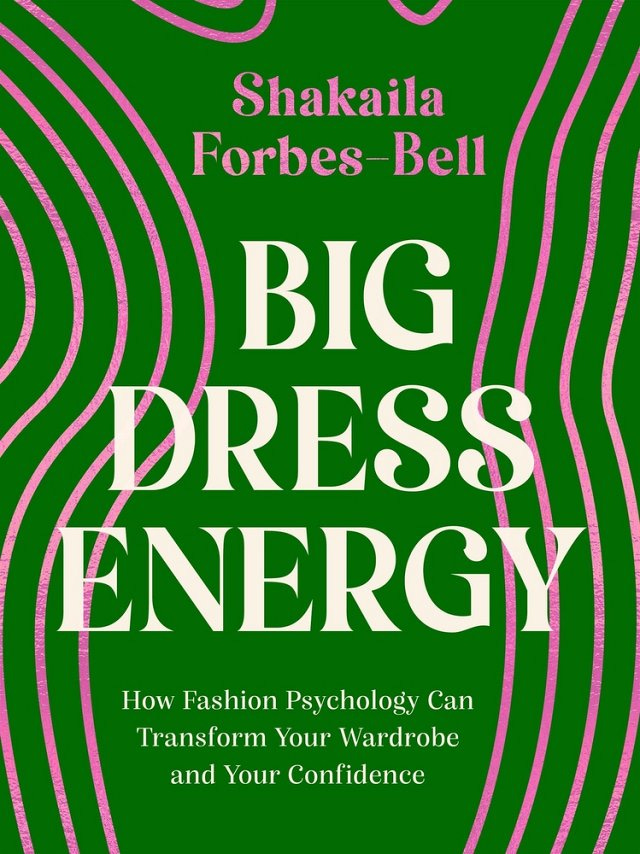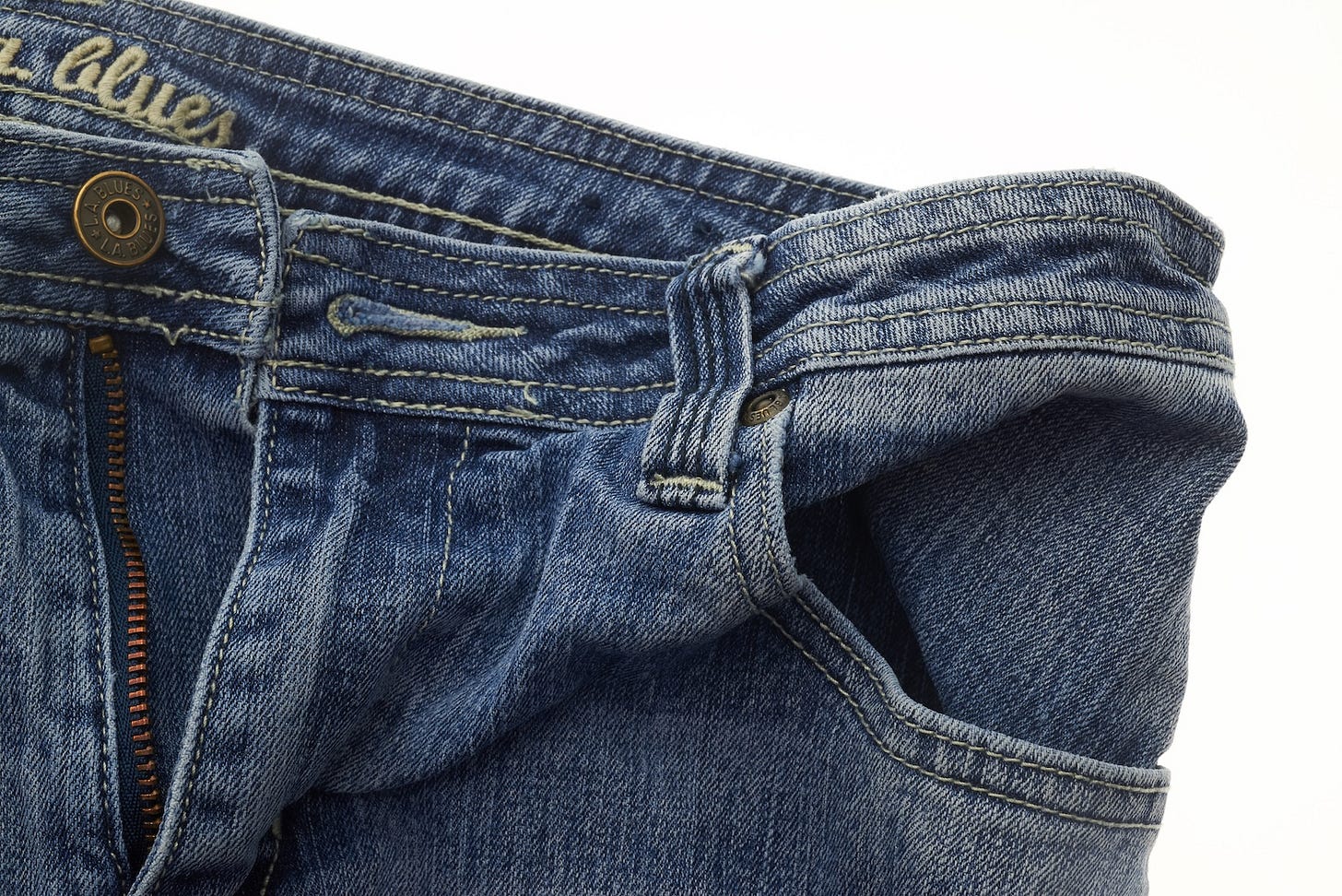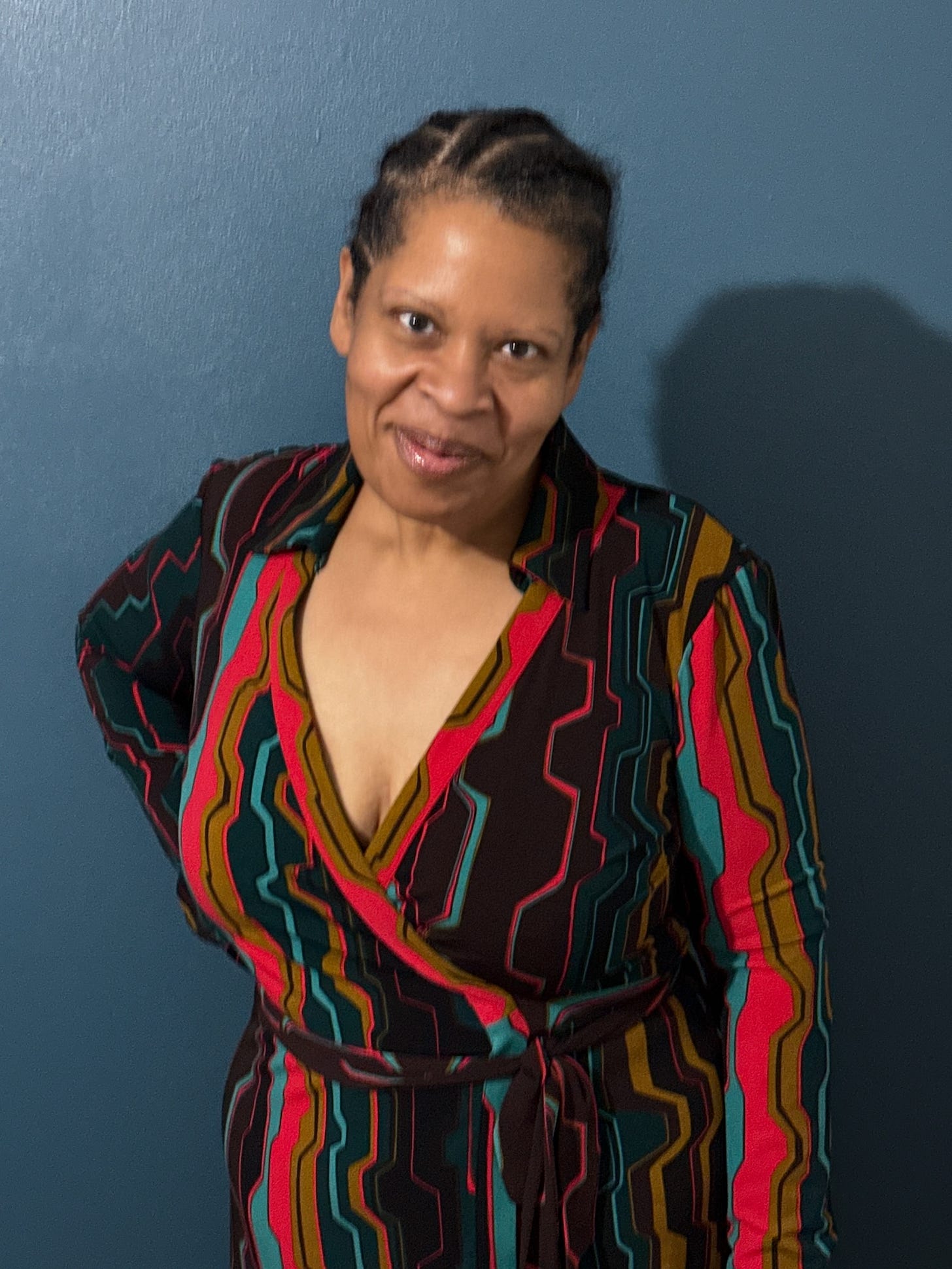Why Goal Outfits Probably Aren’t Motivating You—And What To Do Instead
Featuring the $400 dress I wore only once in a whole decade
Today’s newsletter is one of those where I will share my fashion mistakes.
If you are:
Saving a pair of smaller jeans you wore years ago because you want to wear them again
Buying a dress that’s a couple sizes smaller than you are now because you totally love it, your size isn’t available, and you just know you’ll slay once you lose however many pounds it takes to fit it
Holding on to some second-hand pieces a sister, auntie, or friend gave you because they can’t wear them anymore and they thought you could use them since you’re losing so much weight!
Do yourself a favor: Get rid of all the goal clothes. Donate or resell the jeans. Put the dress back on the rack (or take it out of your digital shopping cart and pin it to your Pinterest board).
There’s a persistent idea in weight loss culture that keeping a smaller size outfit in the closet will motivate people to reach their weight goals. But clothing and identity are so deeply intertwined that there’s an overlooked, underestimated potential for this approach to do mental and emotional harm. Plus, there are other ways to use our wardrobe coins. And, we each deserve to feel good in our clothes today.
This goal dress turned out to be a $400 epic fail!
Here’s an example of how I could have better spent my time and money. (And saved myself a ton of embarrassment!) In 2013 I decided to do a medically supervised very-low-calorie diet: 800 calories of shakes and bars for 13 weeks. I lost 52 pounds. I was so close—and so confident!—that I’d hit a size 14, a size I’d dreamed of being since I was in high school. Of course I’d hit it, I thought. I’d already lost 50! Another 15 should totally be doable. This was a major life goal for me, so I splurged on a goal dress: A $400 Hale Bob wrap.
But that was it as far as weight loss. I lost another 5 and nothing more. I could almost wrap the dress! Just a little more…
After a year I started regaining. I kept the dress on the far end of my closet. Now and then my eyes would fall on it. Sigh.
11 years later—yes, I still had that dress!—My weight maxed at 304 pounds, I had my mini-gastric bypass and started a GLP-1, and once I’d lost about 110 pounds, I decided to try the dress on. Finally! It wrapped! So I decided to wear it to Sunday brunch with some girlfriends. I put it on and decided it needed some fashion tape, so tape it I did, took some extra in case, and off I went.
I couldn’t even show up in the dress like I’d daydreamed (fantasized?) I would. It was too big above the waist and there was not enough fashion tape in the bags of all the sharp women around the table to keep it wrapped.
This story’s long enough, so I’ll just say I shipped the dress off to ThredUp that week.
The takeaway here is a no-brainer in hindsight: A fixation on being a certain size blocked my happiness. My $400 and my mental state would both have been put to better use had I bought something I could enjoy wearing right after losing those 52 pounds. Because Hale Bob didn’t fit me then and didn’t fit me 11 years later.
And yet, so many of us do similar ish!
Why it’s time to move on from goal clothes
Maybe you haven’t had unworn clothes in your closet for over a decade. But may I guess that there’s something in there that doesn’t fit?
“A survey by ClosetMaid, a company that offers indoor storage solutions, found that the average woman considers twenty-one percent of her wardrobe unwearable, with thirty-three percent of these unwearable clothes being too tight and twenty-four percent too loose.”
—Big Dress Energy: How Fashion Psychology Can Transform Your Wardrobe and Your Confidence by Shakaila Forbes-Bell

British fashion psychologist Shakaila Forbes-Bell explains in her book Big Dress Energy how keeping goal outfits and other clothes that don’t fit can actually cause harm:
“The danger of having a lot of clothes that don’t fit is that, as time progresses, it can feel like you’re being confronted with failure every time you open your wardrobe. Imagine if every time you opened your front door, someone jumped out and listed all the crap you haven’t ticked off your to-do list for the last three years. Rough, right? You may not notice it, but by being faced with these ill-fitting items every day, you’re causing yourself psychological discomfort.”
And we are potentially acting on internalized social standards about size, beauty, and fashion:
“By only celebrating our bodies when they look a certain way, or by thinking our lives will be destroyed by body changes like weight gain, we’re upholding damaging beliefs that only certain bodies deserve to be celebrated. It’s essential to change the way we think and talk about other bodies—and our own—because these damaging beliefs are so easily internalised.”
—Big Dress Energy: How Fashion Psychology Can Transform Your Wardrobe and Your Confidence by Shakaila Forbes-Bell
I also realized other practical reasons to stop saving clothes for “someday”:
My shape after weight loss didn’t return to what it was at the same weight before regain—so older goal clothes may not fit like they used to. (I’m sure things like aging-related change and muscle tone are factors.)
My taste in clothes changes over time. Styles change.
It doesn’t make sense to use clothes as a carrot-and-stick motivator when they are something we need every day.
Dress for the body you have now
If I could talk to my 2013 self—and if I could have worked with my therapist then—I might have learned, over time, to embrace the body I had in that moment.
Alternative approaches:
Explore style, as long as it’s not triggering or a painful experience. Create Pinterest boards, or find some other way to organize inspirations.
Get clothes that fit now. I used to hate it so much when people said this to me because the styles I wanted didn’t come in my size. Buying clothes felt like being forced to settle for something that didn’t allow me to express myself. I wanted cute, trendy outfits, and there were so few plus-size clothes I liked. But the truth of it is, finding even one or two comfortable, good-looking outfits makes a difference.
The other reality is that science tells us that there are a lot of biological factors to body weight that are out of our control (without care). Obesity is a chronic disease that’s both recurring and relapsing. I don’t think any of us should delay clothes satisfaction based on the course of a complex disease.Consider a transition wardrobe during active weight loss. We each deserve the space to feel good about how we look now, even if the transition wardrobe is a few pieces.
Buy one new item every paycheck—even if it’s small, like a pair of earrings or a belt. (Advice from my therapist.) From one perspective, I like this better than saving money for clothes. Saving and deciding on a weight goal to unlock spending it can delay happiness just as much as a goal outfit. Remember, we deserve to look good now. Maybe some kind of budget split might work: spend some, save some for big purchases later.
In an upcoming newsletter–this is issue #3, and a biweekly cadence seems right for now—I’ll share how I approached my transition clothes and what I wish I’d done differently.
I’d like to ask you for two things. If there’s someone you know well who is going through weight loss and exploring their personal style, would you consider share this with them?
Also, if you’re getting some benefit from this, or if there’s some topic you’d like me to explore, let me know. My goal with re:dressing is to build a community for people who are on or have been on a journey to lose significant amounts of weight because there are so few spaces for conversations like this. I’d appreciate hearing from you.






